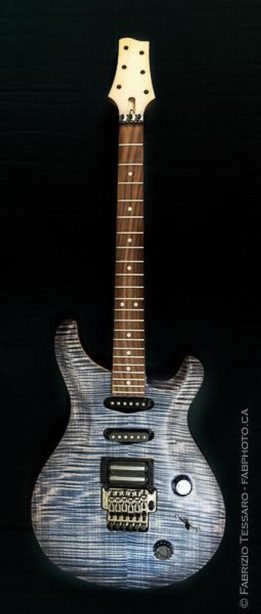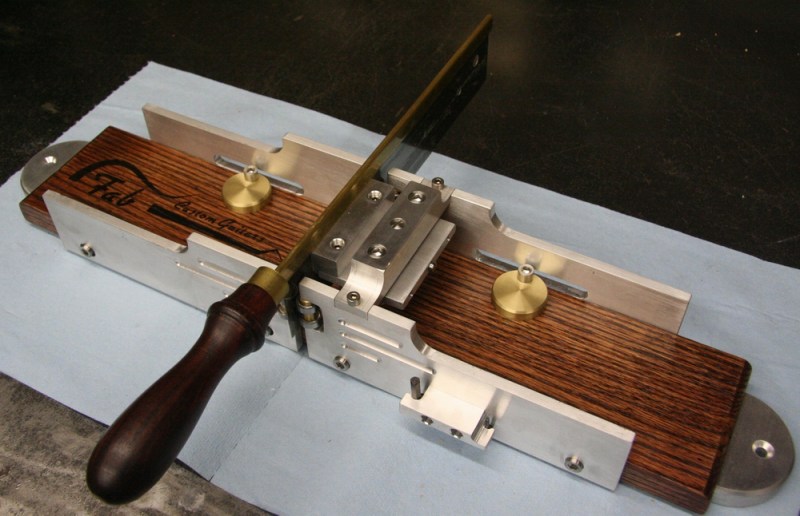 Cutting the slots in a guitar’s neck for the frets requires special tooling, and [Gord]’s contribution to his friend’s recent dive into lutherie was this lovingly engineered and crafted fret mitering jig. We’d love to have a friend like [Gord].
Cutting the slots in a guitar’s neck for the frets requires special tooling, and [Gord]’s contribution to his friend’s recent dive into lutherie was this lovingly engineered and crafted fret mitering jig. We’d love to have a friend like [Gord].
We’ve covered a number of [Gord]’s builds before, and craftsmanship is the first thing that comes to mind whether the project is a man-cave clock or artisanal soaps. For this build, he stepped up the quality a notch – after all, if you’re going to build something you could buy for less than $200, you might as well make it a thing to behold.
There’s plenty to feast the eyes on here – an oak bed with custom logo, the aluminum jig body with brass accents, and the precision bearings that guide the pricey backsaw. Functionality abounds too – everything is adjustable, from the depth of cut to the width of the saw blade. There’s even a place to store the adjustment tool.
The result? Well, let’s just say that [Gord] and his friend [Fabrizio] are kindred spirits in the craftsmanship department. And [Fab]’s not a bad axeman either, as the video below shows.

















I admittedly have a small sample size but why is it that everybody I know of named Gord winds up making intricate, well engineered machines that, while narrow in purpose are exceedingly good at that designed purpose?
“Cutting the slots in a guitar’s neck for the frets requires special tooling”
No it doesn’t, it just requires careful measuring and a correct-size blade so the slot isn’t to thin or wide that the fret wire doesn’t fit. There are many luthiers who do, and have done this for years, without a jig by hand
While that may be true, they probably learned from a master and screwed up a few fret boards before getting it right. I would use a jig myself every-time as a slight misalignment would make my hammering sound even worse.
One would practice on scrap wood before trying on a real guitar.
A little bit of woodworking under your belt, it’s not that difficult as to need master’s guidance.
How about a jig for this?
http://www.ruokangas.com/?p=4001
That’s easy- you just use a saw with the right bend in it :-)